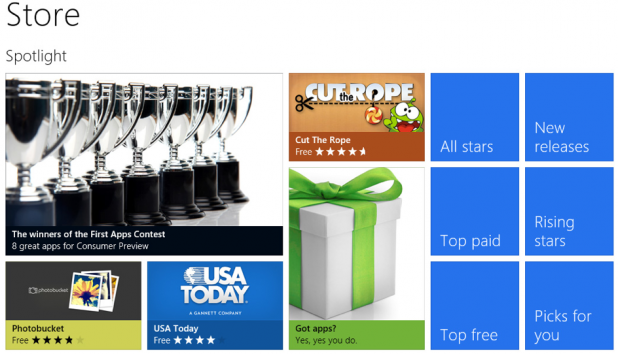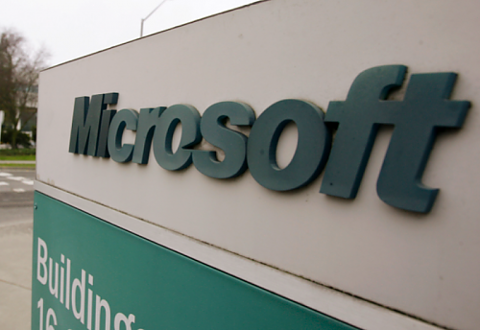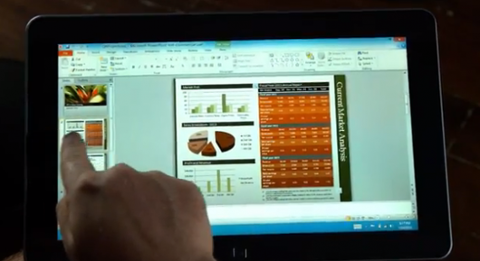 Will Android apps someday appear in the Windows app store?[/caption] Microsoft is considering whether to allow Android apps onto Windows and Windows Phone, according to unnamed sources speaking to The Verge. The planning is in the early stages, according to the tech publication, and many Microsoft employees are reportedly uneasy about the idea. But from a certain perspective, the concept could make a lot of sense: if Microsoft’s desktop and smartphone platforms can run Android apps, that might prevent at least some Windows and Windows Phone users from switching to Android devices. But Android integration is much easier said than done, both from an engineering and business perspective. For starters, Microsoft would need to figure out a way to make the downloading and installation of Android apps a seamless process, which could prove difficult. Second, it seems unlikely that Google would license its Google Play app store to run on Windows—meaning that Microsoft might need to follow in Amazon’s footsteps and build its own standalone Android app portal, then convince developers to fill it with apps. Third, if Microsoft opens up to Android apps, how does it convince developers to keep building software for Windows-on-tablets and Windows Phone, which lags well behind Android and iOS in the smartphone rankings? No wonder Microsoft employees have mixed feelings over the concept. But Microsoft also finds itself in a place where it might need to do something radical in order to recapture some of the initiative from Google and Apple, which have grown to dominate the consumer IT market over the past decade. Smartphones and tablets have replaced desktops and laptops as the center of peoples’ computing lives, weakening Microsoft’s Windows-centric strategy; insult to injury, Android has begun appearing as a dual-boot option on hardware made by some of Microsoft’s manufacturing partners. Microsoft’s original strategy for dealing with this ecosystem shift was multipronged: it introduced a tile-filled, touch-centric Start screen to Windows 8, in order to boost the operating system’s utility on tablets; in addition, it also made sure that Windows 8 shared a kernel, file system, graphics support, and other elements with Windows Phone 8, the latest iteration of the company’s smartphone platform. In theory, that made apps easier to port between the two platforms—something that Microsoft thought would boost developer interest and help it create an app ecosystem capable of competing against rival offerings from Apple and Google. But consumers and businesses greeted Windows 8 with apathy, and Windows Phone still struggles to gain market-share. In light of that, Microsoft is likely exploring new strategies to gain and keep users—including one that embraces its enemy. Image: Microsoft
Will Android apps someday appear in the Windows app store?[/caption] Microsoft is considering whether to allow Android apps onto Windows and Windows Phone, according to unnamed sources speaking to The Verge. The planning is in the early stages, according to the tech publication, and many Microsoft employees are reportedly uneasy about the idea. But from a certain perspective, the concept could make a lot of sense: if Microsoft’s desktop and smartphone platforms can run Android apps, that might prevent at least some Windows and Windows Phone users from switching to Android devices. But Android integration is much easier said than done, both from an engineering and business perspective. For starters, Microsoft would need to figure out a way to make the downloading and installation of Android apps a seamless process, which could prove difficult. Second, it seems unlikely that Google would license its Google Play app store to run on Windows—meaning that Microsoft might need to follow in Amazon’s footsteps and build its own standalone Android app portal, then convince developers to fill it with apps. Third, if Microsoft opens up to Android apps, how does it convince developers to keep building software for Windows-on-tablets and Windows Phone, which lags well behind Android and iOS in the smartphone rankings? No wonder Microsoft employees have mixed feelings over the concept. But Microsoft also finds itself in a place where it might need to do something radical in order to recapture some of the initiative from Google and Apple, which have grown to dominate the consumer IT market over the past decade. Smartphones and tablets have replaced desktops and laptops as the center of peoples’ computing lives, weakening Microsoft’s Windows-centric strategy; insult to injury, Android has begun appearing as a dual-boot option on hardware made by some of Microsoft’s manufacturing partners. Microsoft’s original strategy for dealing with this ecosystem shift was multipronged: it introduced a tile-filled, touch-centric Start screen to Windows 8, in order to boost the operating system’s utility on tablets; in addition, it also made sure that Windows 8 shared a kernel, file system, graphics support, and other elements with Windows Phone 8, the latest iteration of the company’s smartphone platform. In theory, that made apps easier to port between the two platforms—something that Microsoft thought would boost developer interest and help it create an app ecosystem capable of competing against rival offerings from Apple and Google. But consumers and businesses greeted Windows 8 with apathy, and Windows Phone still struggles to gain market-share. In light of that, Microsoft is likely exploring new strategies to gain and keep users—including one that embraces its enemy. Image: Microsoft Microsoft Considering Android App Support for Windows: Report
[caption id="attachment_17242" align="aligncenter" width="618"]  Will Android apps someday appear in the Windows app store?[/caption] Microsoft is considering whether to allow Android apps onto Windows and Windows Phone, according to unnamed sources speaking to The Verge. The planning is in the early stages, according to the tech publication, and many Microsoft employees are reportedly uneasy about the idea. But from a certain perspective, the concept could make a lot of sense: if Microsoft’s desktop and smartphone platforms can run Android apps, that might prevent at least some Windows and Windows Phone users from switching to Android devices. But Android integration is much easier said than done, both from an engineering and business perspective. For starters, Microsoft would need to figure out a way to make the downloading and installation of Android apps a seamless process, which could prove difficult. Second, it seems unlikely that Google would license its Google Play app store to run on Windows—meaning that Microsoft might need to follow in Amazon’s footsteps and build its own standalone Android app portal, then convince developers to fill it with apps. Third, if Microsoft opens up to Android apps, how does it convince developers to keep building software for Windows-on-tablets and Windows Phone, which lags well behind Android and iOS in the smartphone rankings? No wonder Microsoft employees have mixed feelings over the concept. But Microsoft also finds itself in a place where it might need to do something radical in order to recapture some of the initiative from Google and Apple, which have grown to dominate the consumer IT market over the past decade. Smartphones and tablets have replaced desktops and laptops as the center of peoples’ computing lives, weakening Microsoft’s Windows-centric strategy; insult to injury, Android has begun appearing as a dual-boot option on hardware made by some of Microsoft’s manufacturing partners. Microsoft’s original strategy for dealing with this ecosystem shift was multipronged: it introduced a tile-filled, touch-centric Start screen to Windows 8, in order to boost the operating system’s utility on tablets; in addition, it also made sure that Windows 8 shared a kernel, file system, graphics support, and other elements with Windows Phone 8, the latest iteration of the company’s smartphone platform. In theory, that made apps easier to port between the two platforms—something that Microsoft thought would boost developer interest and help it create an app ecosystem capable of competing against rival offerings from Apple and Google. But consumers and businesses greeted Windows 8 with apathy, and Windows Phone still struggles to gain market-share. In light of that, Microsoft is likely exploring new strategies to gain and keep users—including one that embraces its enemy. Image: Microsoft
Will Android apps someday appear in the Windows app store?[/caption] Microsoft is considering whether to allow Android apps onto Windows and Windows Phone, according to unnamed sources speaking to The Verge. The planning is in the early stages, according to the tech publication, and many Microsoft employees are reportedly uneasy about the idea. But from a certain perspective, the concept could make a lot of sense: if Microsoft’s desktop and smartphone platforms can run Android apps, that might prevent at least some Windows and Windows Phone users from switching to Android devices. But Android integration is much easier said than done, both from an engineering and business perspective. For starters, Microsoft would need to figure out a way to make the downloading and installation of Android apps a seamless process, which could prove difficult. Second, it seems unlikely that Google would license its Google Play app store to run on Windows—meaning that Microsoft might need to follow in Amazon’s footsteps and build its own standalone Android app portal, then convince developers to fill it with apps. Third, if Microsoft opens up to Android apps, how does it convince developers to keep building software for Windows-on-tablets and Windows Phone, which lags well behind Android and iOS in the smartphone rankings? No wonder Microsoft employees have mixed feelings over the concept. But Microsoft also finds itself in a place where it might need to do something radical in order to recapture some of the initiative from Google and Apple, which have grown to dominate the consumer IT market over the past decade. Smartphones and tablets have replaced desktops and laptops as the center of peoples’ computing lives, weakening Microsoft’s Windows-centric strategy; insult to injury, Android has begun appearing as a dual-boot option on hardware made by some of Microsoft’s manufacturing partners. Microsoft’s original strategy for dealing with this ecosystem shift was multipronged: it introduced a tile-filled, touch-centric Start screen to Windows 8, in order to boost the operating system’s utility on tablets; in addition, it also made sure that Windows 8 shared a kernel, file system, graphics support, and other elements with Windows Phone 8, the latest iteration of the company’s smartphone platform. In theory, that made apps easier to port between the two platforms—something that Microsoft thought would boost developer interest and help it create an app ecosystem capable of competing against rival offerings from Apple and Google. But consumers and businesses greeted Windows 8 with apathy, and Windows Phone still struggles to gain market-share. In light of that, Microsoft is likely exploring new strategies to gain and keep users—including one that embraces its enemy. Image: Microsoft
 Will Android apps someday appear in the Windows app store?[/caption] Microsoft is considering whether to allow Android apps onto Windows and Windows Phone, according to unnamed sources speaking to The Verge. The planning is in the early stages, according to the tech publication, and many Microsoft employees are reportedly uneasy about the idea. But from a certain perspective, the concept could make a lot of sense: if Microsoft’s desktop and smartphone platforms can run Android apps, that might prevent at least some Windows and Windows Phone users from switching to Android devices. But Android integration is much easier said than done, both from an engineering and business perspective. For starters, Microsoft would need to figure out a way to make the downloading and installation of Android apps a seamless process, which could prove difficult. Second, it seems unlikely that Google would license its Google Play app store to run on Windows—meaning that Microsoft might need to follow in Amazon’s footsteps and build its own standalone Android app portal, then convince developers to fill it with apps. Third, if Microsoft opens up to Android apps, how does it convince developers to keep building software for Windows-on-tablets and Windows Phone, which lags well behind Android and iOS in the smartphone rankings? No wonder Microsoft employees have mixed feelings over the concept. But Microsoft also finds itself in a place where it might need to do something radical in order to recapture some of the initiative from Google and Apple, which have grown to dominate the consumer IT market over the past decade. Smartphones and tablets have replaced desktops and laptops as the center of peoples’ computing lives, weakening Microsoft’s Windows-centric strategy; insult to injury, Android has begun appearing as a dual-boot option on hardware made by some of Microsoft’s manufacturing partners. Microsoft’s original strategy for dealing with this ecosystem shift was multipronged: it introduced a tile-filled, touch-centric Start screen to Windows 8, in order to boost the operating system’s utility on tablets; in addition, it also made sure that Windows 8 shared a kernel, file system, graphics support, and other elements with Windows Phone 8, the latest iteration of the company’s smartphone platform. In theory, that made apps easier to port between the two platforms—something that Microsoft thought would boost developer interest and help it create an app ecosystem capable of competing against rival offerings from Apple and Google. But consumers and businesses greeted Windows 8 with apathy, and Windows Phone still struggles to gain market-share. In light of that, Microsoft is likely exploring new strategies to gain and keep users—including one that embraces its enemy. Image: Microsoft
Will Android apps someday appear in the Windows app store?[/caption] Microsoft is considering whether to allow Android apps onto Windows and Windows Phone, according to unnamed sources speaking to The Verge. The planning is in the early stages, according to the tech publication, and many Microsoft employees are reportedly uneasy about the idea. But from a certain perspective, the concept could make a lot of sense: if Microsoft’s desktop and smartphone platforms can run Android apps, that might prevent at least some Windows and Windows Phone users from switching to Android devices. But Android integration is much easier said than done, both from an engineering and business perspective. For starters, Microsoft would need to figure out a way to make the downloading and installation of Android apps a seamless process, which could prove difficult. Second, it seems unlikely that Google would license its Google Play app store to run on Windows—meaning that Microsoft might need to follow in Amazon’s footsteps and build its own standalone Android app portal, then convince developers to fill it with apps. Third, if Microsoft opens up to Android apps, how does it convince developers to keep building software for Windows-on-tablets and Windows Phone, which lags well behind Android and iOS in the smartphone rankings? No wonder Microsoft employees have mixed feelings over the concept. But Microsoft also finds itself in a place where it might need to do something radical in order to recapture some of the initiative from Google and Apple, which have grown to dominate the consumer IT market over the past decade. Smartphones and tablets have replaced desktops and laptops as the center of peoples’ computing lives, weakening Microsoft’s Windows-centric strategy; insult to injury, Android has begun appearing as a dual-boot option on hardware made by some of Microsoft’s manufacturing partners. Microsoft’s original strategy for dealing with this ecosystem shift was multipronged: it introduced a tile-filled, touch-centric Start screen to Windows 8, in order to boost the operating system’s utility on tablets; in addition, it also made sure that Windows 8 shared a kernel, file system, graphics support, and other elements with Windows Phone 8, the latest iteration of the company’s smartphone platform. In theory, that made apps easier to port between the two platforms—something that Microsoft thought would boost developer interest and help it create an app ecosystem capable of competing against rival offerings from Apple and Google. But consumers and businesses greeted Windows 8 with apathy, and Windows Phone still struggles to gain market-share. In light of that, Microsoft is likely exploring new strategies to gain and keep users—including one that embraces its enemy. Image: Microsoft 


